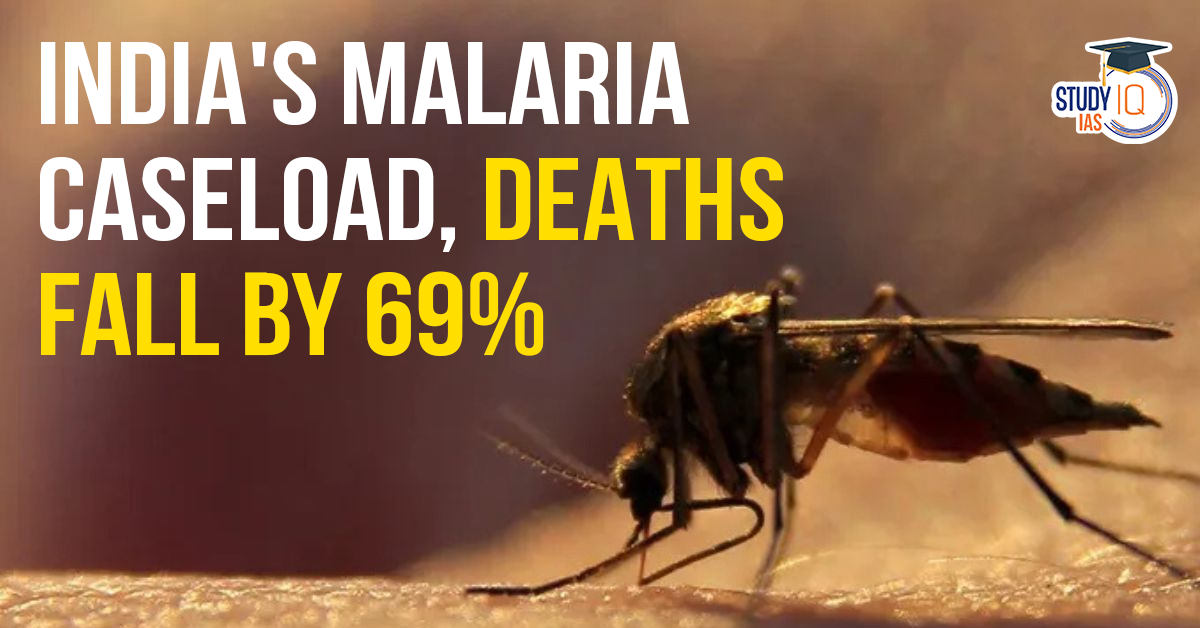Table of Contents
About Malaria
- Malaria is a mosquito-borne disease caused by a parasite. It is preventable and curable.
- It is a life-threatening disease primarily found in tropical countries.
- 5 species of parasites can cause malaria in humans and 2 of these species – Plasmodium falciparum and Plasmodium vivax – pose the greatest threat.
- It is a notifiable disease in India.
Spread
- Malaria mostly spreads to people through the bites of some infected female Anopheles mosquitoes.
- Malaria does not spread from person to person.
- Blood transfusion and contaminated needles may also transmit malaria
Highlights of the WHO’s World Malaria Report 2024
India’s Achievements
- Reduction in Caseload and Deaths:
- Malaria cases reduced by 69%, from 4 million in 2017 to 2 million in 2023.
- Malaria deaths declined by 69%, from 11,100 to 3,500 during the same period.
- Exit from the HBHI Group: India is no longer part of the High-Burden-High-Impact (HBHI) group of endemic countries.
Key Strategies Behind India’s Success
- Artemisinin-Based Combination Therapy (ACT): It is a combination of two or more drugs used to treat malaria. Artemisinin kills most malaria parasites, while a partner drug clears the remaining parasites.
- Long-Lasting Insecticidal Nets (LLIN): LLIN are mosquito nets that contain insecticide in the fibers, making them effective for years without needing to be retreated. These nets block and kill mosquitoes, reducing mosquito populations and their lifespan when widely used.
- Targeted Interventions: Focused efforts in forested and tribal areas in Jharkhand, Odisha, Chhattisgarh, and the North-East improved access to diagnostics, treatments and drugs.
- Effective Monitoring and Case Management: Consistent evaluations helped ensure proper implementation of interventions


 India’s Deep Sea Technology, Need and ...
India’s Deep Sea Technology, Need and ...
 Nag Anti-Tank Missile System (NAMIS)
Nag Anti-Tank Missile System (NAMIS)
 ESA’s Gaia Mission, Scientific Instrum...
ESA’s Gaia Mission, Scientific Instrum...





















